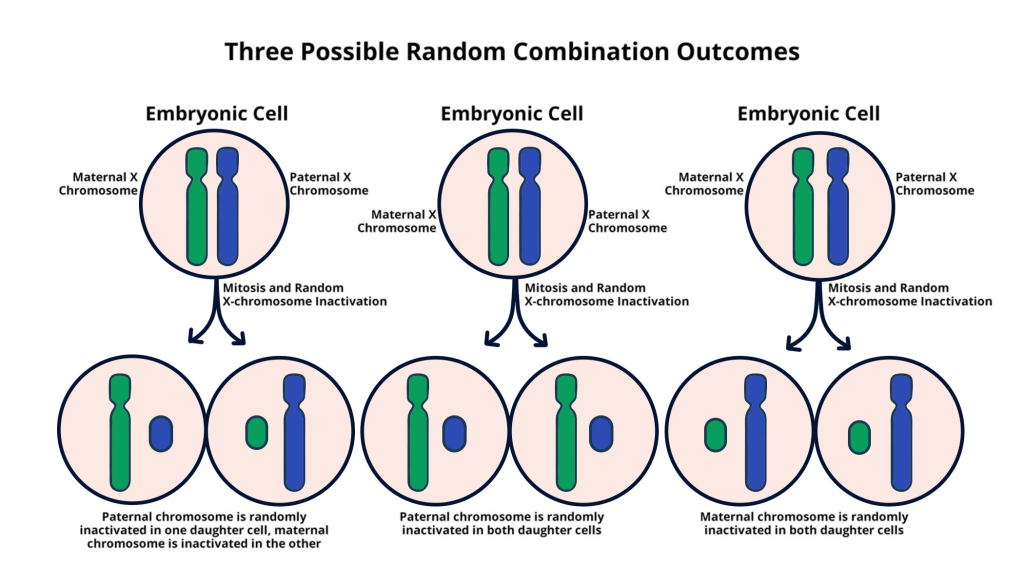
Twisted graphene superconductors are captivating researchers by revealing unique superconducting properties that could transform our technological landscape. Combining two layers of graphene twisted at a specific angle, these materials exhibit phenomena that may usher in lossless power transmission and advanced quantum computing solutions. With their remarkable ability to conduct electricity without resistance, twisted bilayer graphene is poised to revolutionize energy-efficient detectors, making them essential for future space exploration. Recent research from esteemed institutions like Harvard and MIT highlights how this innovative approach can lead to groundbreaking applications, from levitating trains to ultra-sensitive instrumentation. As the field develops, the promise of twisted graphene superconductors is increasingly becoming a focal point for scientists and engineers alike.
The cutting-edge field of twisted bilayer graphene superconductivity explores the intricate interplay between layers of this unique carbon allotrope. By slightly rotating one layer of graphene relative to the other, researchers uncover a range of unusual electronic behaviors and superconducting characteristics that diverge from traditional materials. This novel structure has the potential to enhance lossless energy transmission, providing efficiency solutions crucial for next-generation quantum computing and sensitive detection in low-light environments. Investigations into the quantum behaviors of these layered graphene configurations may reveal insights that futurize energy-efficient technologies. As we deepen our understanding of these advanced materials, the implications for innovative applications in various sectors grow exponentially.
The Role of Twisted Graphene in Superconductivity
Twisted graphene superconductors represent a significant advancement in the realm of material science, particularly due to their unique superconducting properties. As discovered by recent research, introducing a slight twist in bilayer graphene alters its electronic characteristics, enabling a different type of superconductivity that isn’t seen in conventional materials. This phenomenon suggests that the interactions and pairings of electrons within these twisted structures can create a superfluid capable of conducting electricity without loss, a trait that has profoundly implications for future technologies.
The intriguing behavior of electrons in twisted graphene stacks opens avenues for understanding superconductivity on a micro level. Researchers have observed that these electrons can interact in complex ways, leading to a ‘quantum dance’ which appears to be essential in forming electron pairs. By unraveling the mechanics of this pairing, scientists aim to harness these properties for innovations in lossless power transmission and advanced computing technologies. As we delve deeper into the quantum mechanics of these materials, twisted graphene underscores the potential for developing next-generation superconductors that are both economically and energetically efficient.
Implications for Quantum Computing
The advent of twisted graphene superconductors holds transformative potential for quantum computing. With their ability to function at very low temperatures and conduct electricity without resistance, they could serve as ideal candidates for quantum bits (qubits). These qubits are the foundational elements of quantum computers, facilitating calculations that surpass even the most powerful classical computers by manipulating quantum states and superpositions.
Moreover, twisted graphene’s unique properties may enable the development of more stable qubits, significantly reducing error rates associated with quantum computations. This stabilization is crucial, as maintaining quantum coherence remains one of the most significant challenges in building practical quantum computers. By leveraging the superconducting properties of twisted graphene, researchers could potentially see advancements in both processing power and energy efficiency, which are vital for making quantum computing a viable reality.
Applications in Lossless Power Transmission
The implications of twisted graphene superconductors extend beyond computational advancements and touch on the field of lossless power transmission. The property of superconductivity enables these materials to transport electricity without any resistive losses, presenting a groundbreaking solution to current energy inefficiencies. Traditional power lines lose significant energy due to resistance during transmission, leading to increased production costs and environmental impacts.
Integrating twisted graphene superconductors into power grids could revolutionize how electricity is delivered, significantly reducing waste and costs while enhancing grid reliability. As cities grow and the demand for electricity rises, the need for efficient transmission materials becomes critical. Twisted graphene may provide the answer, serving as a framework for the next generation of power distribution infrastructure that is both energy-efficient and scalable.
Developing Energy-Efficient Detectors
The innovative properties of twisted graphene superconductors also showcase promise in the development of energy-efficient detectors, particularly in the challenging environments of space exploration. The unique superconducting behavior in these materials could allow for the construction of lightweight and ultra-sensitive detectors that minimize power usage while maximizing operational efficiency.
In the near-empty conditions of space, where conventional detectors struggle due to limited light and energy sources, twisted graphene superconductors can provide high-resolution detection capabilities with drastically reduced power requirements. By harnessing these new materials, scientists and engineers aim to enhance the capability of instruments used in space missions, enabling better data transmission and analysis while reducing the energy and weight constraints typically associated with space technology.
Understanding the Quantum Dance of Electrons
At the core of the superconducting properties of twisted graphene lies the concept of the ‘quantum dance’ that electrons perform at low temperatures. As researchers delve into how these electrons move in sync, they are uncovering fascinating behaviors that may redefine our understanding of electron interactions in superconductors. Unlike traditional materials, where electrons repel one another due to their negative charge, in twisted graphene, there appears to be a counterintuitive binding force that encourages pairing.
Unraveling this quantum dance is crucial, as it holds the key to manipulating and utilizing these superconducting materials effectively. The research team’s use of advanced techniques, such as microwave resonance to observe these interactions, allows them to gather data on electron behavior that could lead to new insights into quantum mechanics. This understanding not only contributes to theoretical physics but has practical implications for developing advanced materials in superconductivity.
Synergies Between Twisted Graphene and High-Temperature Superconductors
The study of twisted graphene also provides parallels to high-temperature superconductors made from oxide materials, though the mechanisms of superconductivity in these materials remain an ongoing puzzle. The observations made in twisted graphene regarding electron pairing and interaction dynamics may offer valuable insights that can be applied to these high-temperature systems, potentially unraveling longstanding questions about their underlying physics.
As researchers explore similarities in the electron pairing mechanisms between twisted graphene and high-temperature superconductors, there could be breakthroughs that enhance our understanding of superconductivity as a whole. Learning how the electron ‘glue’ operates in twisted graphene could unlock new pathways for synthesizing materials with desirable superconducting properties, paving the way for advancements in both practical applications and theoretical frameworks in material science.
Challenges in Mass-Production of Graphene Technologies
Despite the magnificent potential of twisted graphene superconductors, there remain significant challenges in mass production that could hinder their commercial application. The current methods for producing high-quality twisted graphene are not yet scalable, which means transitioning from laboratory success to industrial implementation poses substantial hurdles. Innovations in manufacturing techniques and processes will be crucial to overcoming these obstacles.
Addressing these production challenges is essential if twisted graphene technologies are to be integrated into real-world applications such as power grids, quantum computers, and energy-efficient detectors. Researchers must collaborate across disciplines, combining insights from chemistry, physics, and engineering to democratize access to these advanced materials and ensure that the benefits of twisted graphene superconductivity reach wider society.
Exploring Future Research Directions in Superconductivity
The discoveries surrounding twisted graphene superconductors have opened a new frontier in superconductivity research, prompting further investigations into their mechanisms and potential applications. As scientists continue to explore this new class of materials, many critical questions remain unanswered. Future research directions aim to elucidate the precise interactions that give rise to superconductive behavior in twisted graphene and how these properties can be harnessed for practical technologies.
Additionally, interdisciplinary collaboration will play a vital role in maximizing the impact of these findings. By bridging physics, materials science, and engineering, researchers can design experiments and studies that probe deeper into the phenomena observed in twisted graphene, ultimately driving innovation in superconducting technologies and their integration into everyday life. This synergy will be critical in tackling contemporary challenges and pushing the boundaries of what’s possible with superconducting materials.
Twisted Graphene: A Key Player in the Future of Tech
As the world leans increasingly toward sustainable and efficient technologies, twisted graphene superconductors stand out as a key player in this evolution. Their remarkable properties allow for significant advancements in several crucial sectors, including energy, computing, and space exploration. Harnessing the quantum mechanical principles behind twisted graphene enables researchers to create materials that may redefine our approach to energy sustainability and technology development.
The potential applications of twisted graphene are vast and varied, touching every aspect of modern technology. From lossless power transmission to high-performance quantum computers and sensitive detection systems, the implications are staggering. As research continues to advance in this field, twisted graphene may very well emerge as a cornerstone of technological innovation in the decades to come.
Frequently Asked Questions
What are twisted graphene superconductors and why are they important?
Twisted graphene superconductors, specifically twisted bilayer graphene, have garnered significant attention due to their unique superconducting properties. They allow the flow of electricity without resistance, leading to potential advancements in lossless power transmission, quantum computing, and energy-efficient detectors.
How do twisted bilayer graphene structures enhance superconducting properties?
The superconducting properties of twisted bilayer graphene arise from the interaction between layers of graphene at precise angles. A small twist modifies electron behavior, allowing them to pair up in a manner that is markedly different from traditional superconductors, facilitating a superfluid state that enables lossless electric flow.
Can twisted graphene superconductors revolutionize quantum computing?
Yes, twisted graphene superconductors may revolutionize quantum computing by providing an environment where quantum bits (qubits) can operate with minimal energy loss. Their unique superconducting characteristics could lead to the development of more robust and energy-efficient quantum computers.
What role do twisted graphene superconductors play in energy-efficient detectors?
Twisted graphene superconductors may be vital in creating ultra-sensitive, energy-efficient detectors. Their superconducting properties can enable high-resolution measurements while consuming minimal power, making them suitable for applications in space exploration and other fields requiring precise detection.
What recent discoveries have been made about superconductivity in twisted graphene?
Recent studies have showcased unusual superconducting behavior in twisted stacks of graphene, revealing a ‘quantum dance’ of electrons that leads to unique pairing mechanisms, which differ from conventional superconductors. This behavior holds promise for better understanding and enhancing superconductivity in various materials.
| Key Aspect | Details |
|---|---|
| Discovery of Superconductivity | First discovered in mercury in 1911 by Heike Kamerlingh Onnes. |
| Twisted Graphene | Revealed unusual superconducting behavior when layers are twisted; offers potential for lossless power transmission, quantum computing, and more. |
| Electrons’ Behavior | Superconducting behavior differs from conventional materials such as aluminum; involves unique electron pairing dynamics. |
| Research Techniques | Microwave technology used to probe resonant vibrations of superconducting electrons, akin to tuning a glass harp. |
| Future Applications | Potential for energy-efficient detectors in space exploration; lightweight and high-resolution required due to limited light in space. |
Summary
Twisted graphene superconductors are revolutionizing our understanding of superconductivity and energy transmission. The recent findings reveal that electron behavior in these materials diverges significantly from traditional superconductors, with promising implications for practical applications such as lossless power transmission and ultra-sensitive detectors for space exploration. As researchers continue to unravel the complexities of twisted graphene, they open doors to innovations that may transform technology in the near future.


